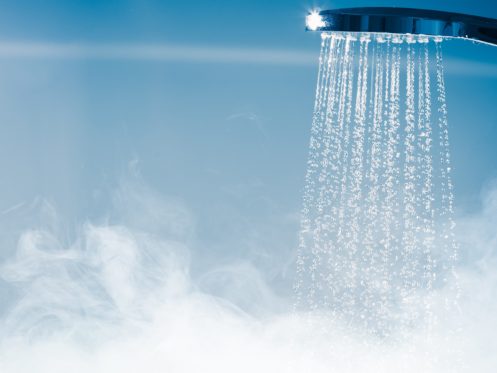Home water problems can present themselves in many different ways, but low water pressure is perhaps the most annoying. Low water pressure can significantly impact your daily life. It can affect faucets as well as toilets, showerheads, dishwashers, washing machines, and other plumbing fixtures or appliances. One of the principal causes of low water pressure in your home is simply a faulty faucet. Once you fix the faucet, you’re good to go. However, a faulty faucet is not the only reason for low water pressure. There are many other sources of water pressure problems. Let’s look at some other common causes for this and tips to help you correct the problem.
1. An Issue With the Water Supply
Before you begin suspecting your pipes or looking for the regulator, ask around in your area to determine if you are the only one having low water pressure issues. If your neighbors are experiencing the same problem, the issue may not be associated with your home water connection. Contact your main water supplier to see if they know about the general water pressure problem. If they are aware of the issue, you may have to sit tight and wait for them to correct the situation. If they are not aware of the problem, you and your neighbors may have to mobilize and come up with a solution.
Your city might have changed its water regulations, and in this case, your water supplier may have to comply with the new requirements. The good thing is that you do not have to endure the low water pressure. You can choose to purchase a water pressure booster. This device will help enhance the current water pressure to restore normalcy in your home. While you might be able to deal with the booster yourself, it would be wise to call a professional to install it.
2. Plumbing Leaks
Plumbing leaks are among the leading causes of water pressure problems. If you are the only person in your vicinity experiencing low water pressure, you might be dealing with a plumbing leak in your house. Leakage is notorious for diverting the water flow, leading to water pressure issues. Fortunately, it is easy to identify some leaks by moisture or sounds. To determine if there are leaks in your plumbing system, close all the water taps in your house and record the water meter. Come back after several hours and check the meter again. If there’s an increased usage, you may have some leaks within your pipework. Plumbing leaks are not a DIY task. You will have to call a plumber who can professionally locate and close up the leaks.
3. Partially Closed Valves
Most houses have two main valves, the main shut-off and meter valves. If these valves are not open all the way, they can cause low water pressure in your home. Before you call your local plumber, you might want to check on the two valves. The shut-off valve might be located inside your house where the main city water supply enters your home. This valve can also be located outside of your house.
The good thing about the shut-off valve is that you can try to open it yourself. It has a handle that looks similar to the one that opens a hose. Turn the handle counterclockwise as far as it can go. If the handle looks similar to a lever, the lever should be completely parallel to the water pipe. If it is not, then the valve is not fully open, which might be why you are experiencing low water pressure.
The meter valve is the other valve that controls the water intake in your house. It belongs to the water company, and most people never deal with it. Meter valves may be difficult to reach, especially the underground ones. If you suspect that the meter is not opened all the way, you may have to contact your water supplier and ask for assistance.
4. Clogged Water Pipes
Clogged water pipes are detrimental to efficient and sufficient water flow. Not only do clogs build up beneath the drains, but they also form inside the pipes. Even a small clog in your pipes can cause water pressure problems in your home. These clogs can be anywhere in the pipes, and since you don’t want to go pulling out pipes to locate the clogs, calling a professional to solve the problem is the best solution. Also, don’t be tempted to use chemicals to unclog your pipes because that can damage them and contaminate your water.
5. Shared Pipelines
You might be sharing pipelines with your neighbors. It doesn’t mean that you are paying for their water usage, but it does mean that your main water supply is shared between two or more households. In a shared pipeline situation, when your neighbor is washing their car or watering their garden, your water supply will go down.
If a shared pipeline is the main reason you have low water pressure, you might have to live with it. You can try changing your routine. For example, you can try to gauge when your neighbor isn’t watering their garden and increase your water usage at that time. Otherwise, you can consider replacing the pipelines. Call your professional plumbing company to check your pipeline and replace it for you.
6. Faulty Faucet or Showerhead
As mentioned above, if you notice that the low water pressure is only with your showerhead or only at the kitchen sink, you might be experiencing a faulty faucet or fixture. In most cases, the fixture or faucet may have a clog or need a new aerator. Sometimes, you have to clean the component to remove the accumulated dirt. You can also try to remove the aerator on the faulty faucet and clean it. Once you have thoroughly cleaned the faucets and showerheads, put them back and see if the water pressure has returned to normal. If you still have a pressure problem, contact your plumber to fix it for you.
7. Faulty Regulator
A pressure regulator assists in balancing water flow, ensuring it is neither too high nor too low. When you happen to notice a sudden drop in the normal water pressure in your home, you might be dealing with a faulty water pressure regulator. If the regulator is malfunctioning, you need to replace it with a new one. To avoid causing more damage, don’t try to install the new regulator unless you are a trained plumber. Call your plumbing service to handle the regulator replacement, and your water pressure will be back to normal.
Your Local Home Comfort Experts
If you’re located in Roseville, Benicia, or a nearby part of northern California, allow our professionals at Environmental Heating & Air Solutions to assist you with your plumbing concerns. We can handle everything from leak detection to water purification to water heaters. We also offer a full range of heating, cooling, and ventilation services. Our technicians will install, repair, and maintain you home comfort equipment. Besides that, you can count on us for home insulation, blower door testing, home automation, and more. Contact us today to schedule an appointment.

